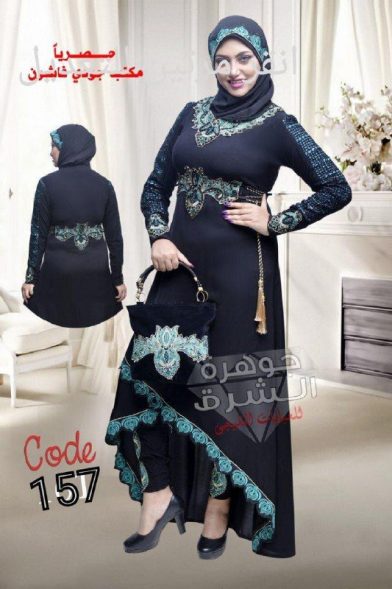Abaya Fashion
The abaya comes in two main styles: they can be worn from the shoulder or from the top of the head. While abayas seem simple and plain at first glance, there is actually a variety of designs. Traditional abayas are simple and unadorned, but in recent years it has become more common to find them with embroidery, colored embellishments, and tailored cuts. The ornamentation is often found along the sleeve cuffs, necklines, or down the front or back. Beads, sequins, colored thread, ribbon, crystals, lace, etc. are used to add flair and color. Design houses such as Yves Saint Laurent and Versace have even made haute couture abayas, and local designers in UAE and other Gulf countries have quite a following among young women. Black is still the traditional and most common base color, but abayas can also be found in other colors such as dark blue, brown, green, and purple.In the past, they were often made of wool or silk and came in one flowing size. Bedouin women often wore various types of lightweight shawls and wraps, not necessarily the black abaya as it is now known. In the past two decades, fabrics have been updated to include cotton knits, chiffon, linen, and others. Ornamentation is often added, and has become more elaborate, sparking a debate about religious modesty vs cultural “fashion.” In the Arabian Gulf region, the abaya is often worn by both older and younger people to demonstrate a connection to their culture, although the younger women often include design embellishments. In Saudi Arabia, all women must wear the abaya in public as a matter of law.
Showing all 3 results



